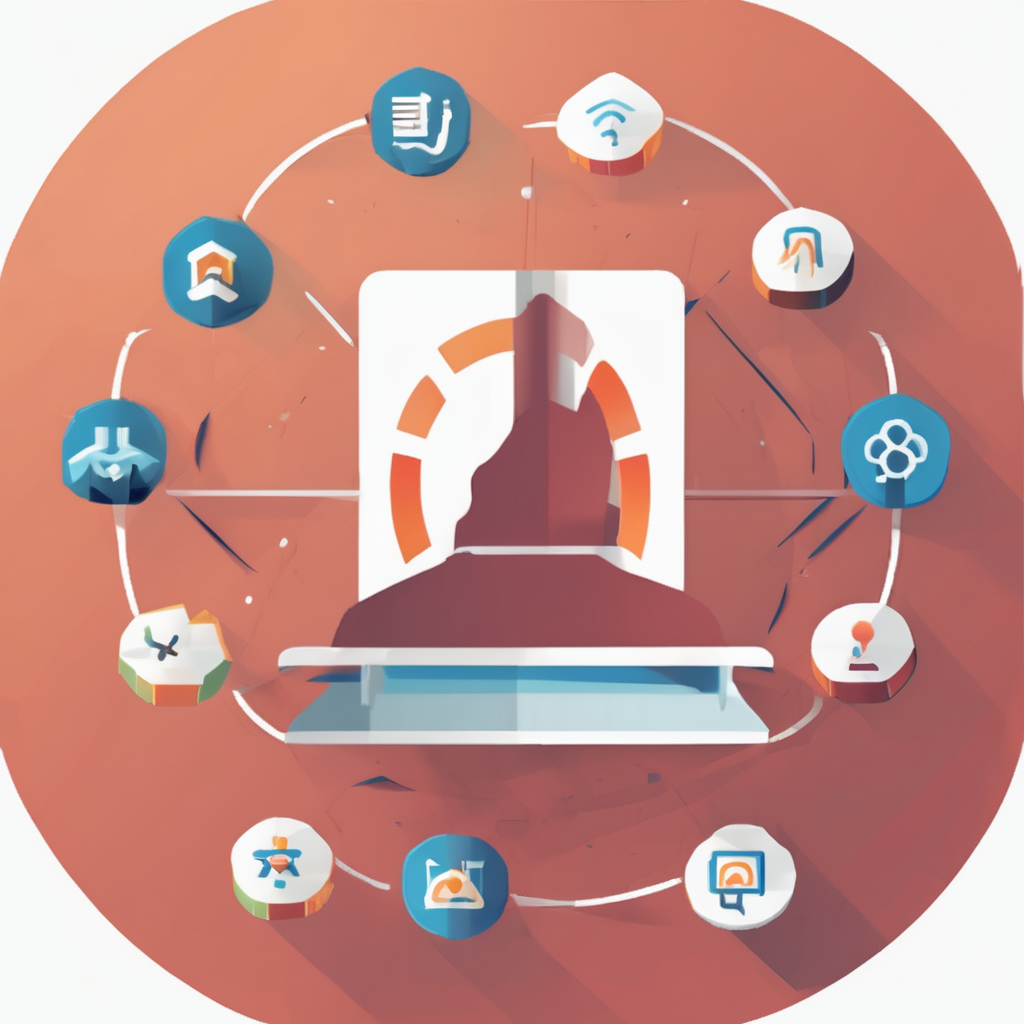Mastering Prometheus: A Comprehensive Guide to Monitoring and Alerting in Microservices Architecture
In the intricate world of microservices architecture, monitoring and alerting are crucial for ensuring the performance, reliability, and overall health of your system. One of the most powerful tools in this domain is Prometheus, an open-source monitoring and alerting toolkit that has become a cornerstone in cloud-native environments and Kubernetes clusters. Here’s a detailed guide on how to master Prometheus and leverage its capabilities to enhance your microservices monitoring.
Understanding Prometheus and Its Role in Microservices
Prometheus is more than just a monitoring tool; it is a comprehensive system for collecting and analyzing metrics, which are essential for understanding the behavior of your microservices. Here’s why Prometheus stands out:
Also read : Unlock surprises: a guide to choosing your mystery box
Key Features of Prometheus
- Time Series Data: Prometheus collects metrics as time series data, allowing you to track changes over time. This is particularly useful for identifying trends and anomalies in your system’s performance[4].
- Powerful Querying: With its PromQL (Prometheus Query Language), you can perform complex queries on your metrics data, enabling deep insights into your system’s behavior[1][4].
- Alerting: Prometheus integrates with alert managers like Alertmanager to trigger alerts based on predefined rules. This ensures that you are notified promptly about critical issues[4].
Setting Up Prometheus for Microservices Monitoring
Setting up Prometheus involves several steps, each crucial for effective monitoring.
Installing Prometheus
Prometheus can be installed on various platforms, including cloud environments and on-premises servers. For cloud-native environments, it is often deployed within Kubernetes clusters. Here’s a high-level overview of the installation process:
Also read : Everything you need to know about an eu data protection representative
- Download and Install: Download the Prometheus binary from the official website and install it on your server or within your Kubernetes cluster.
- Configure Targets: Configure Prometheus to scrape metrics from your microservices. This can be done using service discovery mechanisms or by manually specifying the targets[4].
Configuring Service Discovery
Service discovery is essential for dynamically locating and monitoring your microservices. Here are some best practices:
- Use Kubernetes Service Discovery: If you are running your microservices in a Kubernetes cluster, use the Kubernetes service discovery mechanism to automatically detect and scrape metrics from your services[2].
- Implement DNS or File-Based Service Discovery: For non-Kubernetes environments, you can use DNS or file-based service discovery to manage your targets[4].
Collecting and Analyzing Metrics
Metrics are the heart of any monitoring system, and Prometheus excels in this area.
Types of Metrics
Prometheus supports several types of metrics, each serving a different purpose:
- Counter: A counter is a cumulative metric that represents a total count of some event. For example, the number of requests handled by a service.
- Gauge: A gauge is a metric that can increase or decrease over time. For example, the current memory usage of a service.
- Histogram: A histogram is a metric that samples observations and provides a distribution of the values. For example, the response time of requests.
- Summary: A summary is similar to a histogram but also provides a total count and sum of the observations[4].
Best Practices for Metric Collection
Here are some best practices to keep in mind when collecting metrics:
- Focus on User-Facing Metrics: Prioritize metrics that reflect the user experience, such as response times, error rates, and throughput[3].
- Use Meaningful Metric Names: Use clear and descriptive names for your metrics to ensure they are easily understandable by the development and operations teams.
- Implement Metric Labels: Use labels to add additional context to your metrics, such as the service name, instance ID, or environment.
Alerting and Incident Management
Alerting is a critical component of any monitoring system, and Prometheus integrates seamlessly with alert managers to provide robust alerting capabilities.
Setting Up Alertmanager
Alertmanager is a tool that manages alerts sent by Prometheus. Here’s how you can set it up:
- Configure Alert Rules: Define alert rules in your Prometheus configuration file. These rules specify the conditions under which alerts should be triggered.
- Integrate with Notification Channels: Configure Alertmanager to send notifications to various channels such as Slack, Discord, or email[3].
Best Practices for Alerts
Here are some best practices for creating effective alerts:
- Alert on Symptoms, Not Causes: Focus on alerting on symptoms that affect the user experience rather than on internal system metrics. For example, alert on high error rates rather than high CPU usage[3].
- Make Alerts Actionable: Ensure that every alert requires human intervention and has a clear resolution path. If an alert is triggered but there’s nothing an engineer can do to resolve it, then it shouldn’t be an alert.
- Use Clear Runbooks: Document the actions to investigate, remediate, and communicate on an alert in a runbook. Include a link to this runbook in the alert context[3].
Integrating Prometheus with Other Tools and Technologies
Prometheus is often used in conjunction with other tools to provide a comprehensive observability solution.
Using Grafana for Visualization
Grafana is a popular visualization tool that integrates well with Prometheus. Here’s how you can use it:
- Create Dashboards: Build custom dashboards to visualize your metrics data. This helps in making informed decisions and identifying trends and anomalies.
- Set Up Alerts: Configure Grafana to trigger alerts based on your Prometheus data. This provides an additional layer of monitoring and alerting[4].
Leveraging Distributed Tracing
Distributed tracing is another critical aspect of observability in microservices architecture. Here’s how you can integrate it with Prometheus:
- Use OpenTelemetry: OpenTelemetry is a standard for distributed tracing that integrates well with Prometheus. It provides end-to-end visibility into your microservices architecture.
- Correlate Traces with Metrics: Combine tracing data with metrics to gain deeper insights into system behavior. This helps in identifying performance bottlenecks and errors[5].
Managing AI and Microservices with Prometheus
In environments where AI and microservices coexist, monitoring becomes even more complex.
Monitoring AI Models
Here are some strategies for monitoring AI models in a microservices architecture:
- Track Performance Metrics: Monitor metrics like response time, error rates, and resource usage for each microservice. This helps in identifying performance bottlenecks.
- Detect Model Drift: Implement monitoring to detect when model performance degrades over time due to changes in data patterns.
- Automated Retraining: Set up pipelines to automatically retrain models based on new data, ensuring models remain accurate and relevant[2].
Security and Data Protection in Prometheus
Security is paramount when dealing with sensitive data in microservices architecture.
Ensuring Data Encryption
- Encrypt Data in Transit: Use TLS to encrypt data transmitted between Prometheus and your microservices.
- Encrypt Data at Rest: Ensure that your metrics data is encrypted when stored in databases or file systems[2].
Implementing Authentication and Authorization
- Use OAuth or JWT Tokens: Implement strong authentication and authorization mechanisms to control access to Prometheus and your microservices.
- Regular Security Audits: Conduct regular security audits and vulnerability assessments to identify and mitigate potential risks[2].
Mastering Prometheus is a key step in ensuring the performance and reliability of your microservices architecture. By understanding its features, setting it up correctly, and integrating it with other tools and technologies, you can gain deep insights into your system’s behavior and make informed decisions.
Here is a summary of the key points discussed:
| Tool/Feature | Description | Best Practices |
|---|---|---|
| Prometheus | Collects metrics as time series data, powerful querying capabilities | Focus on user-facing metrics, use meaningful metric names, implement metric labels |
| Alertmanager | Manages alerts sent by Prometheus | Alert on symptoms, make alerts actionable, use clear runbooks |
| Grafana | Visualization tool for metrics data | Create custom dashboards, set up alerts |
| Distributed Tracing | Provides end-to-end visibility into microservices architecture | Use OpenTelemetry, correlate traces with metrics |
| AI Model Monitoring | Tracks performance metrics, detects model drift, automated retraining | Track performance metrics, detect model drift, automate retraining |
| Security | Ensures data encryption, implements authentication and authorization | Encrypt data in transit and at rest, use OAuth or JWT tokens, regular security audits |
By following these best practices and leveraging the capabilities of Prometheus and other tools, you can build a robust monitoring and alerting system that enhances the performance, reliability, and overall user experience of your microservices architecture.
Additional Resources
For further learning, here are some additional resources:
- Prometheus Documentation: The official Prometheus documentation provides detailed guides on installation, configuration, and usage[4].
- Grafana Tutorials: Grafana offers various tutorials on how to create dashboards and visualize your metrics data[4].
- OpenTelemetry Guides: OpenTelemetry provides comprehensive guides on implementing distributed tracing in your microservices architecture[5].
By mastering Prometheus and integrating it with other observability tools, you can ensure that your microservices architecture is always performing at its best, providing a seamless user experience and driving business success.











